Dalhousie’s historic buildings add to campus character — and in them rests a great deal of the university’s history. But there are five that carry more years of history in them than the others.
The Dalhousie Archives and Special Collections’ offers an illustrated history of the Halifax campuses up to 2006. The university's first campus building no longer exists: the original Dalhousie College building on the Grand Parade was demolished in 1886. However, there are several buildings on Sexton Campus with long and storied histories which became part of the Nova Scotia Technical College in the 20th century (and, from there, part of the Dal community in 1997). Those buildings are joined in our 18th-century survey by the first structure on what is now Carleton Campus.
You won’t find any buildings from either Studley or the Agricultural Campuses on this list, however; those came a bit later. The AC’s Cumming Hall was completed in 1904, just prior to the official opening of the College of Agriculture. The first building on Studley Campus was the Chemistry Building, completed in 1915, followed shortly by the Macdonald Building (also 1915) and the University Club (1921).
Here are Dalhousie’s top 5 oldest historical buildings. If these walls could talk…*
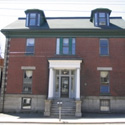 1. Hart House (“K” Building) (1864)
1. Hart House (“K” Building) (1864)
Hart House (or the“K” Building), located on Barrington Street and completed in 1864, was perhaps the last residence in Halifax built in the Palladian/Loyalist style. It’s named after its initial buyer, Jairus Hart, a descendent of a Loyalist family with lumbering and shipping interests. The Nova Scotia Technical College acquired the building in 1967 and it was designated as a City of Halifax heritage property in 1989. Today, it houses the Department of Engineering Mathematics and Internetworking.
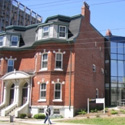 2. Industrial Engineering (“I” Building) (1875)
2. Industrial Engineering (“I” Building) (1875)
Located on Morris Street, this building was previously known as Morroy Apartments, built in 1875. Like Hart House, it is a designated historic property and was purchased by the Province of Nova Scotia and placed under control of the Nova Scotia Technical College in 1969. It was used as a membership-based lounge facility known as “Tech House” until fire damage led to its closure in early 1977. However, Dalhousie reopened it in 1999 with a 14,000 square-foot link addition that connects it to the Mechanical Engineering Building. It’s home to the Department of Industrial Engineering.
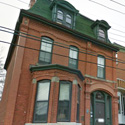 3. Moren House (“L” Building) (1880s)
3. Moren House (“L” Building) (1880s)
This Barrington Street house was built on the original site of the late 19th-century home of the first Anglican bishop of Nova Scotia. One of few brick residences built in the 1880s, it takes its name from Sarah Moren, wife of James Moren, a West India merchant and president of the Glace Bay Mining Company. After her death, the house had many roles: at one point owned by the Oland family, it also became the Headquarters for Civil Defence and in 1960 was home to the Nova Scotia division of the Corps of Commissionaires. It was acquired by the Nova Scotia Technical College and was used as the residence of College President J. Clair Callaghan from 1977 until 1989. Nowadays it houses co-op offices and, like the first three buildings on this list, it is a city heritage property.
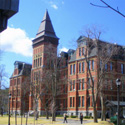 4. Forrest Building (1887)
4. Forrest Building (1887)
When Dalhousie College moved from the Grand Parade, the Forrest Building became its home. Between 1887 and 1914, in fact, it was Dalhousie's only building. (It gained the “Forrest” name, that of Dal’s third president, in 1919.) It was designed by architect J.G. Dumaresq in a style unique among Canadian universities at the time: a three-storey brick building designed as a basic beginning, with future additions figuring in Dumaresq's original plans. With a central tower of 145 feet high, the building featured an arts library of 1,400 square feet and a museum, both of which could be coverted into classrooms. Since 1985, following the completion of a major refurbishing, it has housed the Nursing, Physiotherapy and Occupational Therapy programs.
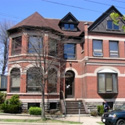 5. Graduate Student Residence (“O” Building) (1892)
5. Graduate Student Residence (“O” Building) (1892)
Another house on what is now Sexton Campus, this building was renovated and brought up to an acceptable standard to be used as a residence to be used for graduate students at the Nova Scotia Technical College during the 1970/71 academic year. Today, the Morris Street house is home to up to 13 students in large single rooms.
Addendum: Commenter Peter O'Brien rightly points out that while its age is uncertain (which is why we missed it), the President's Residence is believed to date back to sometime in the 1860s or 1870s, meaning it should have a place on this list. Thanks Peter! You can learn more about the residence .
*Editor’s note: While often romanticized as a figure of speech, talking walls in real life would probably be terrifying.

